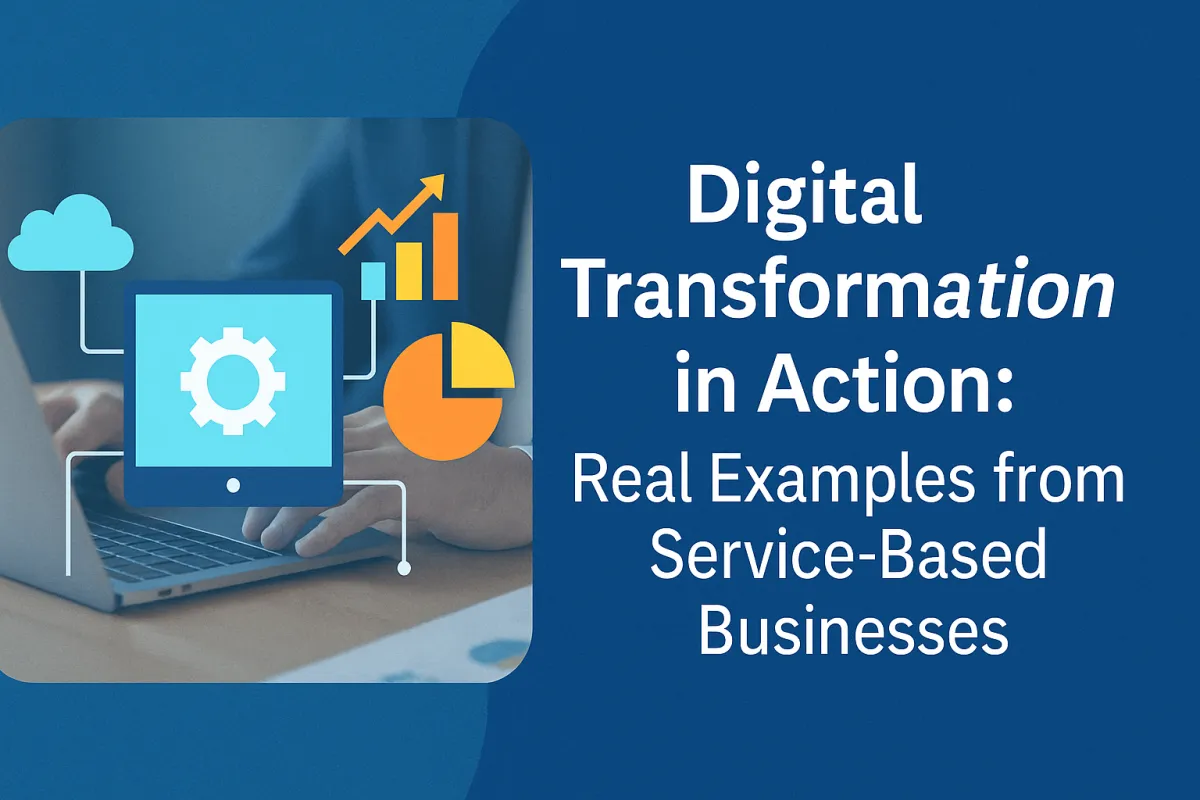
Digital Makeovers That Drive Growth
Digital transformation isn’t just theory — many service businesses are already using it to grow, improve, and stand out. Seeing real examples helps you picture what’s possible and how you could apply similar ideas in your own business.
Below are a few real or near-real examples (adapted to service types) and what you can learn from them.
Example 1: A Health Clinic Automates Patient Scheduling & Reminders
Imagine a clinic that used to handle all bookings over the phone, and staff manually called patients to remind them of appointments. Missed calls, double bookings, forgotten reminders — all were daily headaches.
This clinic adopted an online scheduling system plus automated reminders (text/email). Now, patients can pick times online, and reminders go automatically. The result: fewer no-shows, less back-and-forth, and staff time saved.
Lesson: Even small automation in booking and reminders can make a big difference in service businesses with appointments.
Example 2: A Local Repair Shop Uses a CRM to Manage Customer History
A repair shop (auto repair, electronics, home repair) often serves repeat customers. But tracking customer info, past jobs, warranty details, and parts used was messy — sometimes scattered in notebooks or spreadsheets.
By implementing a CRM (Customer Relationship Management) tool, they centralized all customer details, job histories, reminders for maintenance, and invoices. When a customer calls, staff see their full history. Offers and upsells can be more personalized.
Lesson: Centralizing customer data gives you better service, cross-selling, and prevents information loss.
Example 3: A Marketing Agency Introduces Project Management Automation
Consider a small agency with designers, writers, and account managers. They used email threads, spreadsheets, and slack messages to coordinate projects. Many tasks slipped through, deadlines were missed, and status updates were inconsistent.
They switched to a digital project management system with automated task assignment, progress tracking, and client feedback integration. Notifications alert team members, and clients can view progress. The result: fewer errors, better communication, and smoother workflows.
Lesson: Service businesses that juggle multiple people and projects benefit hugely from structured digital workflows.
Example 4: A Home Services Company Uses Mobile Apps for Field Staff
A cleaning, lawn care, or plumbing company often sends teams into the field. Before, field staff had paper assignments, maps, and snail-mail paperwork. Delays and mistakes were common (lost forms, misassigned jobs).
They adopted a field service app: staff get digital job details, record completions, upload photos, get directions, and sync data automatically. The office sees real-time updates. This saved time, reduced errors, and improved tracking.
Lesson: Mobile tools for field work reduce friction between on-site work and back office.
Example 5: A Coaching / Consulting Business Offers Digital Client Portals
A consultant or coach might deliver deliverables, feedback, and content via email or shared drives. Clients sometimes ask, “Where is that document again?” or “Which version is latest?”
By creating a client portal (a simple web platform) where clients login, see their current deliverables, messages, past history, and next tasks, the business reduces confusion. Clients feel more professional service, and the consultant spends less time emailing back and forth.
Lesson: Digital client portals (even simple ones) raise perceived value and reduce administrative overhead.
Why These Examples Matter
You don’t need to be a giant business to get wins. Even simple tools can create outsized benefits when applied smartly.
Most service businesses have repeatable, predictable patterns (appointments, field work, deliverables). That makes them ideal for digital transformation.
The key is starting with your biggest pain points (missed appointments, miscommunication, delays) and applying tools to fix them.
Real success comes when people adopt the tools — not just installing them but using them daily.
If you’d like help identifying which transformation idea fits your service business best, or need guidance building your own “in action” plan, CLR Solutions.
5 FAQs
Q1. Can a small service business really use transformation like big companies do?
A: Yes. Many examples above (local clinics, repair shops, consultants) show that small to medium service businesses can adopt these tools. You don’t need a huge budget — start small.
Want help finding the right starting point for your business? Reach out
Q2. Will my customers accept digital changes (like scheduling online)?
A: Usually yes, especially if the tool is easy and convenient. Many customers already expect digital options. Just introduce it gently and provide support. Need help planning customer adoption? Contact us
Q3. How long until I see benefits from these changes?
A: Some benefits come fast (weeks) — like fewer no-shows, better communication, reduced errors. Larger benefits (revenue growth, client retention) may take a few months. We can estimate a timeline for your business. Let’s talk
Q4. Do these transformations require advanced technical skills?
A: Not always. Many tools today are built for non-tech users. They have easy interfaces, onboarding support, and simple setups. You don’t need to code. Want help choosing user-friendly tools? Contact us here
Q5. How do I decide which transformation example to follow?
A: Look at your biggest pain point — the process that wastes the most time or causes the most errors. Choose a similar example, adapt it, and test it. Start with one area. Let’s figure out your biggest opportunity together.Reach out now

